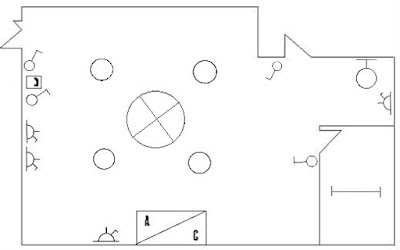In previous post, we learn how underground cable wiring are done with procedure. underground cables comes with variety of types and strong insulation to prevent cables from damaging. These cables aren't complicated because this cables only transmit or send electricity from one place to another place,but these cable has it's own voltage rates to transmit. So lets look at it.
A underground cable comes with different insulation. This is because the cable must prevent damage from chemically,mechanically, and toxic gas that can damage the cable insulation.
Function of underground cable insulation :
Conductor :
Core or Conductor A cable may have one or more than one core depending upon the type of service for which it is intended. The conductor could be of aluminum or copper and is stranded in order to provide flexibility to the cable.
Core or Conductor A cable may have one or more than one core depending upon the type of service for which it is intended. The conductor could be of aluminum or copper and is stranded in order to provide flexibility to the cable.
Insulation :
The core is provided with suitable thickness of
insulation, depending upon the voltage to be
withstood by the cable.
The commonly used material for insulation are
impregnated paper, varnished cambric or
rubber mineral compound.
Metallic Sheath :
A metallic sheath of lead or aluminum is provided
over the insulation to protect the cable from
moisture, gases or others damaging liquids.
Bedding :
Bedding is provided to protect the metallic
sheath from corrosion and from mechanical
damage due to armoring. It is a fibrous material
like jute or hessian tape.
Armouring
:
Its purpose is to protect the cable from
mechanical injury while laying it or during the
course of handling. It consists of one or two
layers of galvanized steel wire or steel tape.
Serving :
To protect armouring from atmospheric
conditions, a layer of fibrous material is provided.
Construction of Cables.
Types of Underground Cables
We learn whats inside an underground cables. Now we going to look about types of underground cable that use in transmission of electricity.
1) SWA (Steel Wired Armoured) cable.
This cable normally used in street light underground wiring or SSB (Sub Switch Board) electrical transmission. This cable voltage rate is 240V/415V.
2) XLPE (Cross Linked Polyethylene) cable.
XLPE cable is used for all range voltage for medium voltage applications. It has thick cable insulation,this is because it widely used in electrical transmission.
3) Oil Filled Cable
Oil filled cables are used to avoid conductors to have a contact or arcing between cores. This oil is fill in oil duct for it can flow through the duct. This will prevent happening short circuit between cores.
4) Gas Pressure Cable
Although as many insulation cover the conductor, this cable has inert gases that give lost of dielectric and capacitance. Furthermore, this gas carry heat created by the cable.
5) Fiber Optic Cable.
Fiber optic cable usually send data and information to one place to another. So this cable is used to transmit to internet server. This cable known as marine cable because it's most lay underwater.
4) Gas Pressure Cable
Although as many insulation cover the conductor, this cable has inert gases that give lost of dielectric and capacitance. Furthermore, this gas carry heat created by the cable.
5) Fiber Optic Cable.
Fiber optic cable usually send data and information to one place to another. So this cable is used to transmit to internet server. This cable known as marine cable because it's most lay underwater.











































